Tuscany is considered by many to be the “Heart of Italy”, not simply due to it’s location near the geographic center of this diverse country. Here you will find Italian spoken in it’s truest form, and any fan of the Renaissance knows of the leading role that Florence and this region played in world history of that time. The food of this region is just as distinctive - robust flavors that don’t need fancy sauces or frills to distinguish it as notable. Simple, delicious dishes made with the freshest of local ingredients. Wonderfully simple and tasty cuisine.
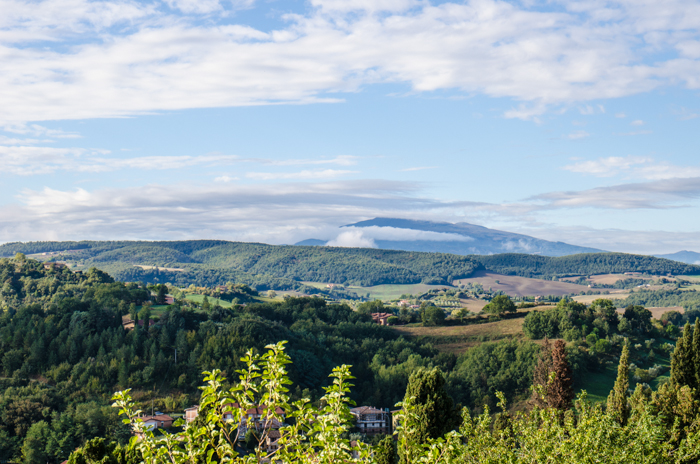
You’ll find many pasta dishes to enjoy in Tuscany, but not loaded down with red sauce. Homemade egg pasta such as papparadelle is served with meat sauces made with rabbit or cinghiale (wild boar). Grilled meats are quite common, with the famous bistecca alla florentina, a steak from the local Chianina or Maremmana cattle, normally cooked only to rare over a wood fire. Beans are ubiquitous, with Tuscans earning the nickname mangiafagioli, or ‘bean eaters’, and enjoyed on their own, in soups, salads, or as a side dish for meat.

Minimal seasoning is used; salt, pepper, basil, rosemary, fennel, oregano are all used sparingly. I smile when I find a “Tuscan” style dish on a US menu with a complex array of ingredients. What is used liberally to flavor their dishes are their local products - wine and olive oil. Tuscans believe their olive oil is the finest in Italy, and are very particular about what type of olive oil to use when, and almost always only use extra vergine, except when frying. A real flavor treat is to enjoy a luxuriously simple pasta dish flavored with Tuscan truffles, both black and white truffles are found there.
The following is a list (by no means comprehensive!) of just a few of the wonderful dishes that make up the cuisine of Tuscany.
Salumi
Finocchiona—pork sausage studded with fennel seeds
Prosciutto di cinghiale—salt- and air-cured wild boar
Salame toscano—pork sausage studded with pepper and cubes of fat
Salsicce fresche—fresh sausage of pork or wild boar
Sopprassatta—head cheese or cooked sausage made from pig’s head, with spices and lemon peel
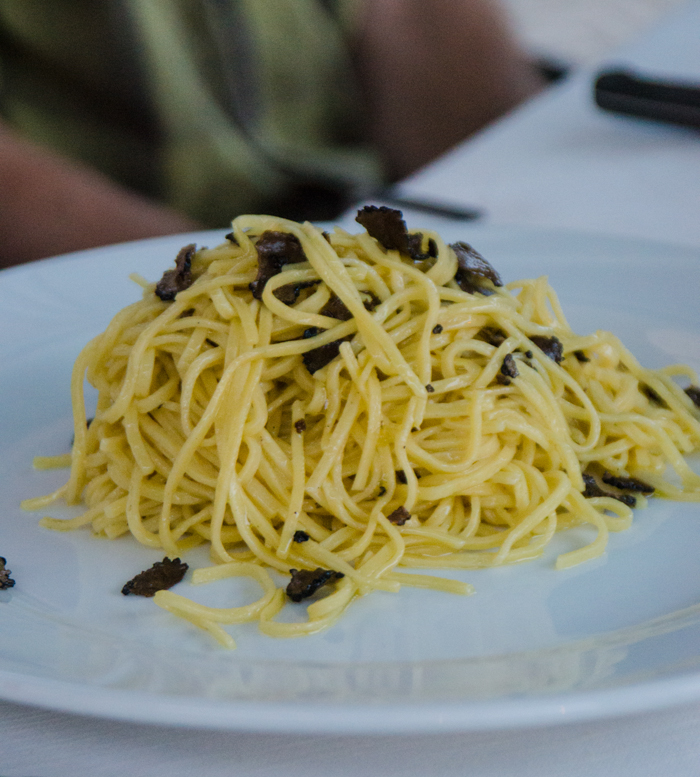
Antipasto
Crostini—traditional minced liver canapés
Crostini di milza—canapés of minced sautéed spleen
Fettunta or Bruschetta—slab of toasted country bread rubbed with garlic and dipped in extra virgin olive oil, sprinkled with salt and pepper
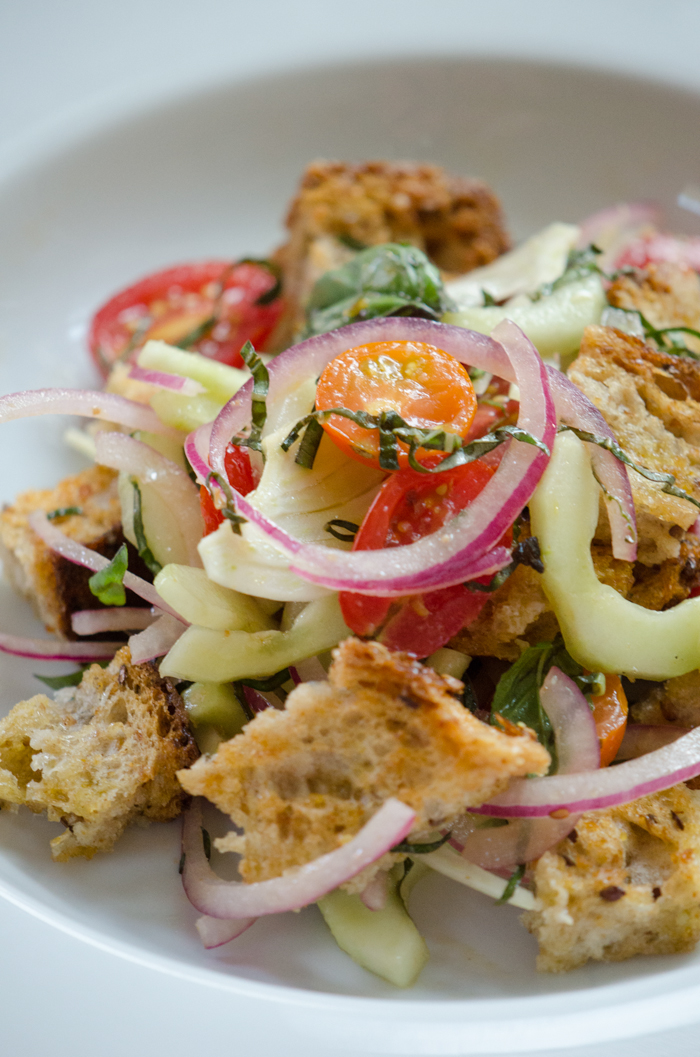
Primo
Acquacotta—vegetable mushroom soup served over toasted bread and topped with a poached egg
Cacciucco—coastal fish stew with tomatoes, chili pepper and red wine
Carbaccia—onion soup
Cavolo con le fette—cooked black cabbage on garlic bread, moistened with cabbage broth and liberally dressed with olive oil
Garmugia—springtime vegetable soup made with fava beans, peas, artichokes, asparagus tips and bacon
Gnocchi di ricotta—dumplings filled with ricotta and spinach
Infarinata—vegetable soup thickened with cornmeal
Minestra di farro—spelt and bean soup
Panzanella—summer salad of tomatoes, basil, cucumber, onion and bread dressed with olive oil
Pappa col pomodoro—tomato soup thickened with bread, drizzled with olive oil at the table
Pappardelle sulla leper—homemade egg pasta noodles with a wild rabbit sauce
Penne strascicate—quill-shaped pasta “dragged through” a meat sauce
Pici—hand-rolled egg pasta that looks like short, thick spaghetti
Ribollita—hearty winter vegetable soup thickened with bread and drizzled with olive oil at the table
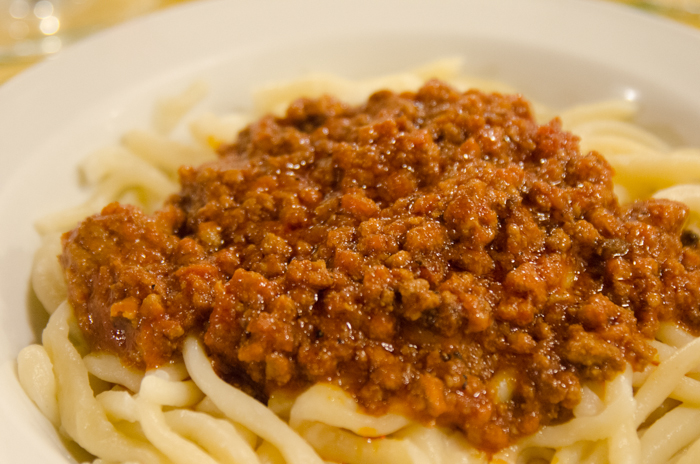
Formaggio
Pecorino—fresh or aged sheep’s milk cheese
Raveggiolo—soft, fresh sheep’s milk whey cheese
Ricotta—soft, fresh, milk, made from whey
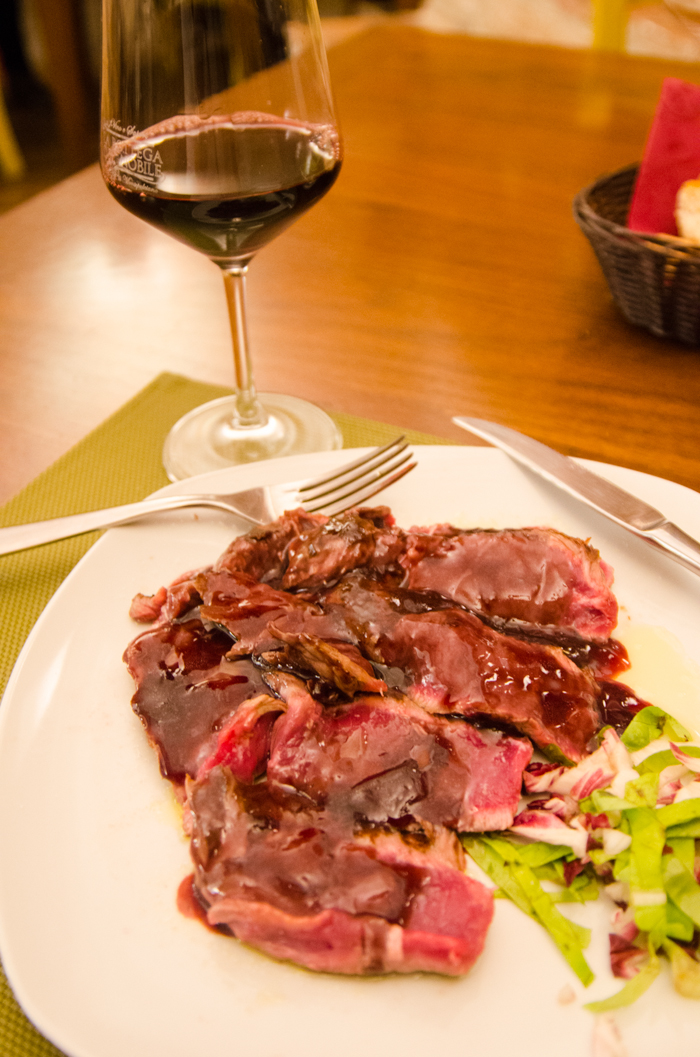
Secondo
Arista—roast pork loin with garlic and rosemary
Asparagi all fiorentina—asparagus topped with melted butter, a fried egg, and cheese
Baccalà alla livornese—salt cod cooked with garlic, tomatoes and parsley
Bistecca alla fiorentina—T-bone steak, charcoal-grilled
Cibreo—stew of chicken livers, unlaid eggs and cockscomb
Cieche alla pisana—tiny baby eels cooked with garlic and tomatoes, served with Parmesan cheese
Fritto misto—mixed fried foods, usually chicken, rabbit or lamb chops, and vegetables
Lombatina—veal chop, usually grilled
Peposo—peppery beef stew
Pollo alla diavola—chickened flatten with a brick, grilled with herbs
Scottiglia—mixed stew of veal, game, and poultry, cooked with white wine and tomatoes
Spiedini di maiale—pork loin cubes and pork liver spiced with fennel, skewered with bread and bay leaves, and grilled or spit-roasted
Stracotto—pot roast
Tonno con fagioli—tuna served with white beans and raw onion
Totani all’inzimino—cuttlefish cooked with Swiss chard and tomatoes
Triglie livornese—red mullet cooked with tomatoes, garlic and parsley
Trippa alla fiorentina—tripe cooked with tomatoes, served with Parmesan cheese
Contorno
Fagioli al fiasco—boiled white beans
Fagioli all’olio—white beans served with oil
Fagioli all’uccelletto—white beans cooked with tomatoes, garlic and sage
Frittata di carciofi—pan-fried artichoke flan
Pinzimonio—raw seasonal vegetables dipped in extra virgin olive oil, salt and pepper
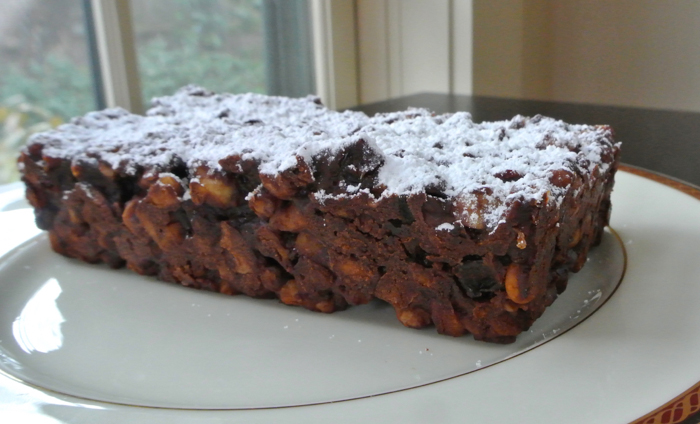
Dolce
Biscottini di Prato or cantucci—dried almond cookies, served with dessert wine
Bongo— filled cream puffs with chocolate sauce
Brigidini—anise wafer cookies
Buccellato—simple anise raisin cake
Castagnaccio—baked unleavened chestnut-flour cake with raisins, walnuts and rosemary
Panpepato - spicy fruit cake with nuts, dried fruit and dark chocolate


